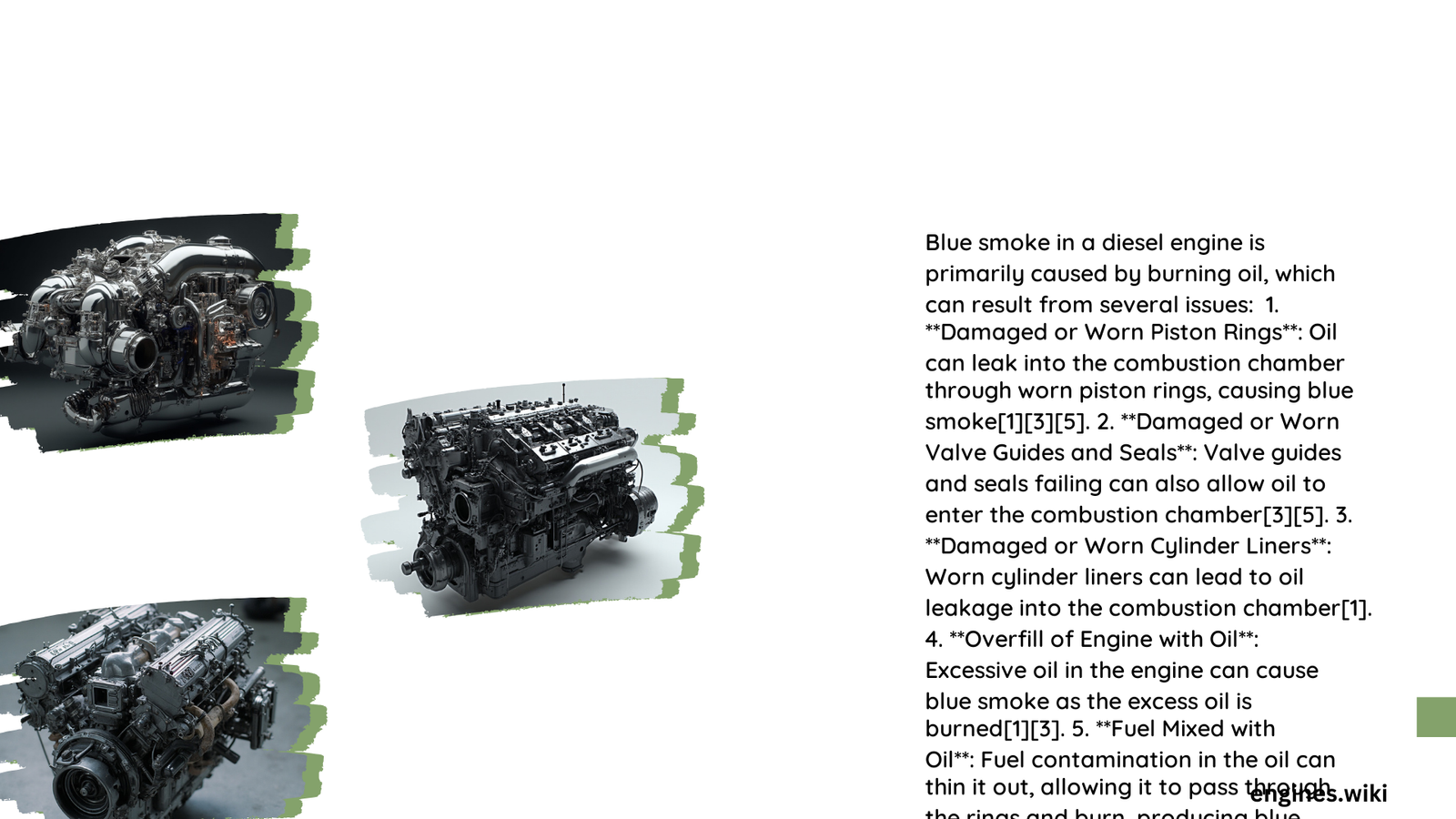Blue smoke in diesel engines is primarily caused by engine oil burning in the combustion chamber. This issue can stem from various mechanical problems, including worn piston rings, damaged valve stem seals, turbocharger failures, and fuel injector malfunctions. Understanding these causes is crucial for proper diagnosis and timely repair, preventing further engine damage and maintaining optimal performance.
What Are the Main Causes of Blue Smoke in Diesel Engines?
- Worn Piston Rings
- Damaged Valve Stem Seals
- Turbocharger Failures
- Fuel Injector Malfunctions
- Engine Oil Leaks
How Do Worn Piston Rings Contribute to Blue Smoke?
Worn piston rings are a common cause of blue smoke in diesel engines. They fail to create a proper seal between the piston and cylinder wall, allowing engine oil to seep into the combustion chamber. This oil is then burned along with the fuel, producing distinctive blue smoke.
Symptoms of Worn Piston Rings:
- Excessive oil consumption
- Loss of engine power
- Increased exhaust emissions
- Poor fuel economy
To diagnose worn piston rings, mechanics typically perform:
1. Compression tests
2. Leak-down tests
3. Visual inspections using borescopes
What Role Do Damaged Valve Stem Seals Play in Blue Smoke Emission?
Valve stem seals prevent oil from leaking into the combustion chamber through the valve guides. When these seals deteriorate, oil can enter the combustion chamber, resulting in blue smoke, especially during engine startup or deceleration.
| Condition | Symptom |
|---|---|
| Good Seals | Minimal oil consumption |
| Worn Seals | Increased oil consumption |
| Failed Seals | Blue smoke on startup/deceleration |
How Can Turbocharger Failures Lead to Blue Smoke?
Turbocharger failures can significantly contribute to blue smoke emissions in diesel engines. The most common issues include:
- Worn Shaft Bearings: Allow oil to leak into the exhaust system
- Damaged Seals: Fail to contain oil within the turbocharger
- Cracked Housings: Permit oil to escape and enter the intake or exhaust
Diagnostic Steps for Turbocharger Issues:
- Check for unusual noises (whistling or whining)
- Inspect for oil leaks around the turbocharger
- Perform a boost pressure test
- Examine the turbocharger shaft for excessive play
What Is the Connection Between Fuel Injector Malfunctions and Blue Smoke?
While less common, fuel injector malfunctions can indirectly cause blue smoke. Faulty injectors may allow fuel to dilute the engine oil, reducing its viscosity. This thinned oil can more easily bypass piston rings and valve seals, leading to oil burning and blue smoke.
Symptoms of fuel injector issues include:
– Rough idling
– Poor acceleration
– Decreased fuel efficiency
– Engine misfires
How Do Engine Oil Leaks Contribute to Blue Smoke?
Engine oil leaks can occur from various points in the engine, including:
– Valve cover gaskets
– Oil pan gaskets
– Timing cover seals
– Crankshaft seals
When these leaks allow oil to enter the combustion chamber or exhaust system, blue smoke is produced.
What Are the Best Practices for Preventing Blue Smoke in Diesel Engines?

- Regular Oil Changes: Use high-quality oil and change it according to manufacturer recommendations.
- Proper Maintenance: Follow the prescribed maintenance schedule for your diesel engine.
- Address Issues Promptly: Don’t ignore early signs of engine problems.
- Use Quality Parts: When replacements are necessary, opt for high-quality components.
- Monitor Oil Consumption: Keep track of how much oil your engine uses between changes.
By understanding the causes of blue smoke in diesel engines and implementing these preventive measures, you can extend the life of your engine and maintain its performance.
